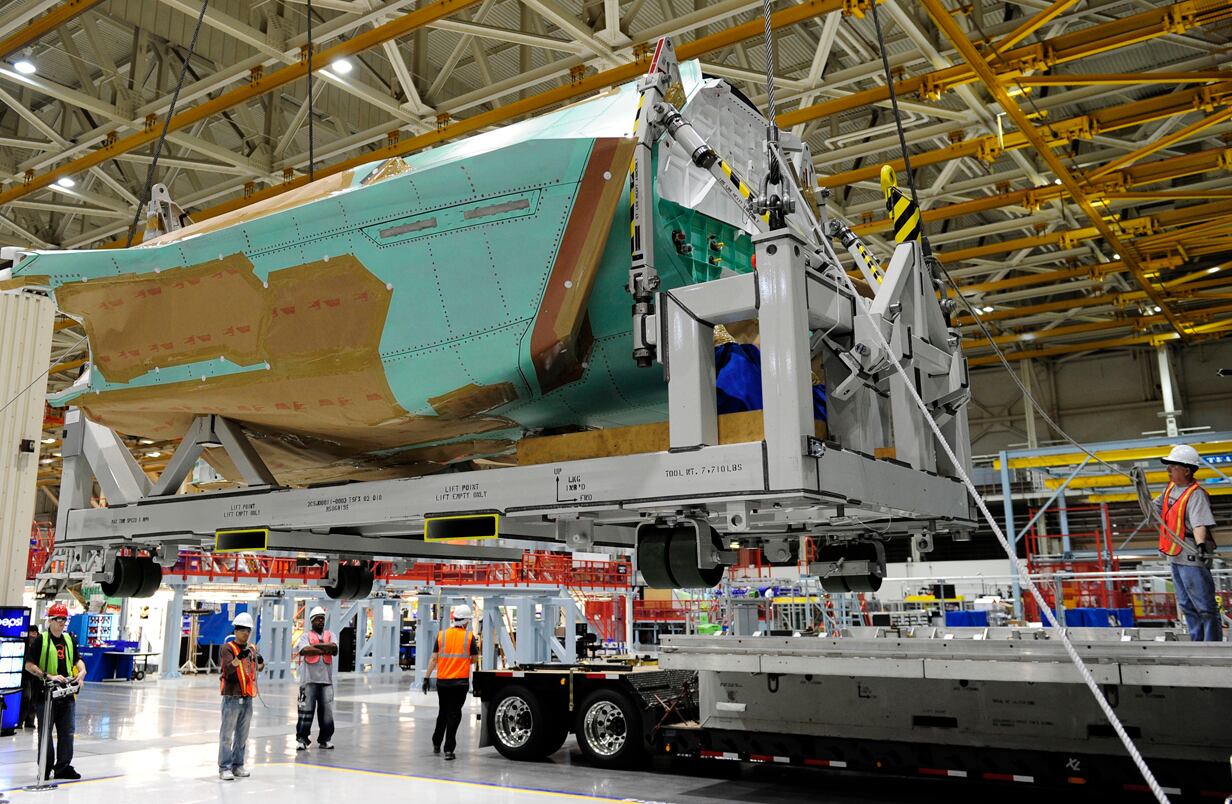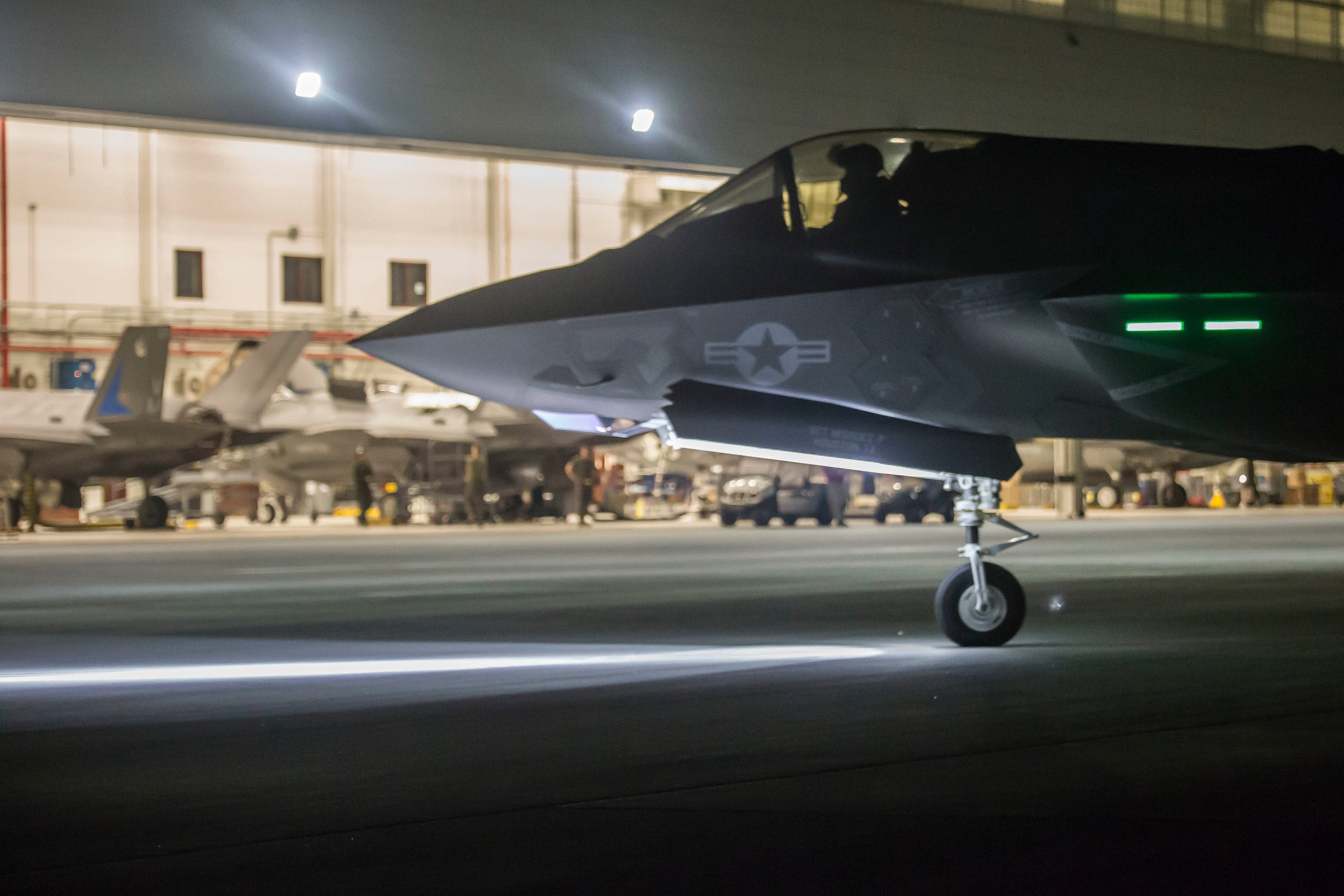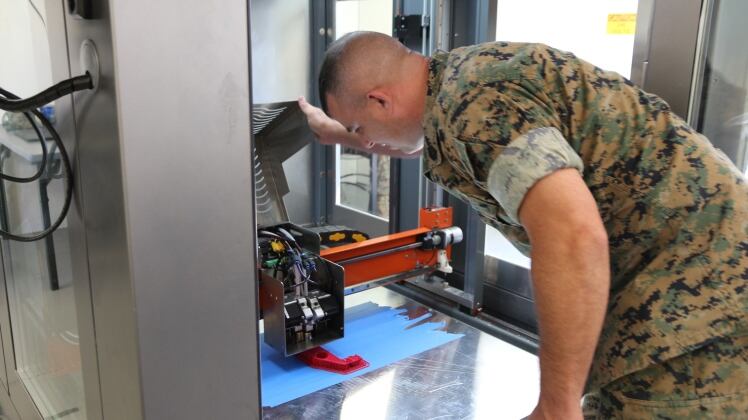WASHINGTON — The F-35 program office and Lockheed Martin are kicking off a second round of cost-cutting initiatives in the hopes of driving unit costs of an A-model to $80 million by 2020, and this time, more focus will be on Lockheed’s expansive supply chain.
The Pentagon on Monday awarded Lockheed $60 million for “cost savings projects to reduce the cost of the F-35 joint strike fighter air system.”
On Tuesday, Joe DellaVedova, spokesman for the F-35 joint program office, confirmed that payment would fund the second phase of Blueprint for Affordability, referred to as BFA, which will begin to reap savings as early as the twelfth low rate initial production lot.
While the first BFA effort resulted mostly in changes made by the three biggest companies involved in the F-35 program — prime contractor Lockheed Martin; Northrop Grumman, which produces the center fuselage; and BAE Systems, which makes the rear aft fuselage — the latest effort will target other businesses further down the supply chain.
“BFA 2 is aimed at driving production savings deeper into the supply chain,” DellaVedova said, adding that at least 25 percent of the $60 million award has been earmarked for companies other than Lockheed, Northrop and BAE.
A Lockheed news release issued in July 2016 noted that more 20 “sub-tier suppliers” had already received funding as part of the effort.
During the Air Force Association’s annual conference last week, Lockheed’s F-35 program head explained that the JPO had opted to try a new funding structure for the second BFA effort.
In the original BFA, Lockheed, Northrop and BAE put forth an initial investment of about $170 million for improvements to processes and infrastructure that would cut the cost of joint strike fighter production, said Jeff Babione, the company’s executive vice president and general manager.
Then, once the companies proved that it had shaved costs during the eight, ninth and tenth batches of production, the Defense Department would pay back that investment plus a fee.
RELATED

Altogether, Lockheed estimates that the more than 200 projects completed during the first BFA program will save the Pentagon more than $4 billion over the life of the program.
During BFA2, the government will make the upfront investment and also incentivize cost savings, meaning that Lockheed and its suppliers could earn even more money depending on the success of its initiatives.
“It’s a slightly different business model. I would say it doesn’t change things significantly,” Babione said.
“I think we have the first half of dozen projects underway,” he added. “There are hundreds of projects that are in the queue that just need to a have the time and energy put [in]. Remember, we had BFA 1, and we got to a point where we ran out of money, but we didn’t run out of projects. So, we just took all the projects that were left over and we dropped them in the hopper at the beginning.”
RELATED

Many of Lockheed’s suppliers say they have independently funded new cost-saving technologies and processes, even without Blueprint for Affordability money.
Orbital ATK — which produces 35 percent of the F-35’s composite structures, including the upper and lower wing skins, nacelle components and inlet ducts — has proposed more than 40 projects to Lockheed Martin as part of BFA, said Richard Passmore, Orbital’s director of military structures programs.
Four of those are currently under consideration for the second phase. One project would simply get rid of a second thickness inspection of wing covers that Orbital believes is duplicative and unnecessary, given Lockheed’s ability to apply liquid or hard shims to eliminate any gaps between structures, according to an Orbital ATK spokesman. Another would improve the processes on how finished parts are marked before being shipped off.
Lockheed has not previously funded any of the Orbital ATK’s suggested affordability projects, but the company has put some into place with its own money, Passmore said.
For instance, Orbital ATK was having quality control issues with nacelles, which are made of a “fiber-placed composite” where carbon fibers are layered together, impregnated with resin and then cured.
“Five years ago, 70 percent of the parts Orbital ATK was producing were either too thick, didn’t meet thickness requirements or had this effect of OCW, outer contour wave, in the components,” Passmore said.
The company internally funded a number of projects and changed some of its manufacturing processes, such as when to “debulk” the structure and how to cure it, he said.
“Today, Orbital ATK is producing at a rate of 98 percent zero defect.”
RELATED

STEICO Industries, an Oceanside, Calif.-based business that makes tubes and ducts for the F-35, has also invested millions of dollars into its manufacturing processes, according to its CEO Matt Sweaney.
Over the past three years, it spent more than $2 million to bring the machining of standard fittings in house. That has reduced lead times and the cost of those fittings, said Sweaney, who declined to comment further about its cost reduction programs.
Valerie Insinna is Defense News' air warfare reporter. She previously worked the Navy/congressional beats for Defense Daily, which followed almost three years as a staff writer for National Defense Magazine. Prior to that, she worked as an editorial assistant for the Tokyo Shimbun’s Washington bureau.








